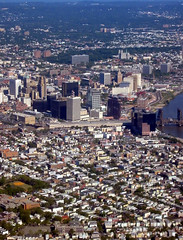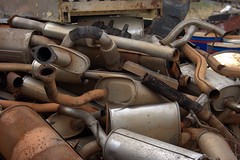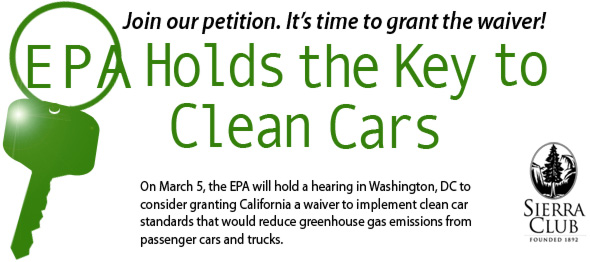(Source: Living on Earth)



Ridership on the nation’s mass transit systems; subways, buses and light rails, is at an all time high. But while the mass is up – transit, the number of stops and services is dropping dramatically, even while ticket prices are taking a hike. The federal stimulus package will infuse a massive 16 billion dollars into public transit, half of that for high speed rails.
And William Millar, President of the American Public Transportation Association says, the money is arriving right on time.
MILLAR: Well we like to say it’s the best of times and worst of times, as that famous writer once said. In – since that – in 2007 we had reached a modern high of about 10.3 billion times that year Americans used public transit, only to be eclipsed in 2008. Looks like there’ll be at least five percent higher than that .
Eleven federally designated high-speed rail corridors have been in the works for years, but funding for the projects was not available until now. (Courtesy of the U.S. House of Representatives)
GELLERMAN: The costs are spiraling out of control. I was looking at St. Louis and they’re gonna have to eliminate 2000 bus stops because they just can’t afford to run buses there.
MILLAR: In most cases the revenue is not able to keep up with the cost. While people think of paying their fare let’s say when they get on the subway line, that fare is designed to only cover perhaps a third, maybe half the cost of the system. The rest comes from a combination of federal, state and local funds, and those funds come from the very sources that we’re seeing the down turn in the economy. So, sales taxes is a frequent way that it happens or property taxes, and, of course, property values are falling throughout the country. Sometimes gasoline taxes, but, of course, we’re using less gasoline than we did. So at the very time we ought to be increasing our public transit use to meet the new demand, we’re finding that many transit systems around the country are having to cut back, having to raise fares, because, of course, we have to balance our budgets just like everyone e/lse does.
Click
here to read the interview.
 “Battery electric vehicles, plug-in hybrids and possibly hydrogen fuel cell vehicles are expected to become increasingly available in the near-to-medium term given recent improvements especially in batteries,” the 50-by-50 campaign noted in a leaflet. “However, these advanced technologies are not necessary to achieve the 50 percent potential described here, but could result in further CO2 reductions and oil savings if they succeed in achieving mass-market commercialization.”
“Battery electric vehicles, plug-in hybrids and possibly hydrogen fuel cell vehicles are expected to become increasingly available in the near-to-medium term given recent improvements especially in batteries,” the 50-by-50 campaign noted in a leaflet. “However, these advanced technologies are not necessary to achieve the 50 percent potential described here, but could result in further CO2 reductions and oil savings if they succeed in achieving mass-market commercialization.”





 MIT’s latest creation, a speedy solar car cheekily named
MIT’s latest creation, a speedy solar car cheekily named 




